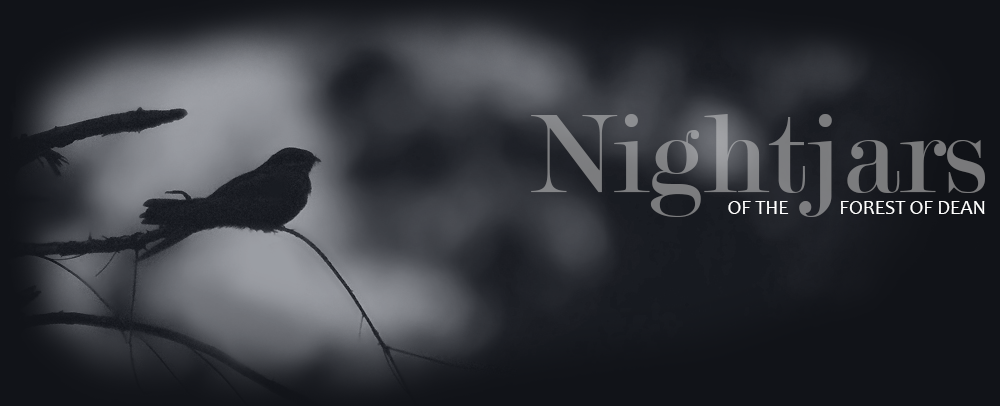Ground nesting birds always run a risk when breeding. There’s only so much a nightjar can achieve against a predator when its only ammunition is the ability to imitate a stick or make hissy noises with no real backup of force. Over the years we’ve seen evidence of inadvertent trampling by humans, Fallow Deer, Roe Deer, Wild Boar and grazing cattle, as well as predation by Wild Boar, corvids, rodents, Red Fox and others. Therefore it often doesn’t come as a surprise when, on approaching a nest, we discover it to be empty.
Last night was such an occasion. The first egg was laid on the 8th July and the second on the 9th, so the female should still have been incubating her two eggs, but the nest was empty. Closer inspection revealed one fragment on an egg shell and a unusually large amount of down feathers (it’s common to find one or two), and no evidence of a struggle or footprints/droppings from any mammals. I had a trail-camera covering the nest, looking down on it from a small rowan tree that would occasionally sway in the wind (evident in the video clips).
This time it wasn’t the usual case of nest predation. Here is what I found…
14th July 21:31 – female incubating the eggs. It’s around about the time that she’d be expecting the male to relieve her for a short period so that she can feed.
21:43 – the male arrives at the nest and a bit of courtship takes place before she leaves the nest to feed, leaving him to look after the eggs.
22:27 (and possibly earlier) – the female is back on the eggs.
The next few clips show her adjusting her position, tucking the eggs underneath her, all as expected.
23:23 – the first obvious sign that something isn’t right. As the bird turns, it looks as though at least one of the eggs is stuck to her.
23:26 – it’s now clear that both eggs are stuck to her.
15th July 02:23 – The female has spent all night frustrated by the stuck eggs and has made matters potentially worse in trying to remove them. Feathers are protruding, vegetation stuck to her, and wherever she goes so do the eggs, both of which are stuck fast to her feathers.
02:23 – Although the camera doesn’t capture the moment, the male has arrived to give her morning nest relief, and she has flown with the stuck eggs still attached to her. He now sits where the eggs should be and goes through the motions, even seeming to tuck the invisible eggs beneath him at times.
04:18 – The male has left and the female has returned. She had been gone much longer than a usual feeding foray and has clearly spent some time removing the eggs, as she has returned with only half an eggshell now attached to her.
The next day the female spent many hours removing fragments of shell that were still stuck in her feathers, as well as large amounts of down feathers.
16:58 was the last time she was seen at the nest. Neither she nor the male returned again.
The best explanation we can think of is that at least one of the eggs must have been slightly damaged, leaking its contents on to the bird, consequently gluing both the eggs to her. Although everything was late this season, I think it unlikely that they will try again this year. However, this is a female that is known to us, evident by the metal ring on her foot, and it’s highly likely that the male is also a familiar bird, so it’s reasonable to imagine that they’ll be back breeding somewhere nearby next year.
Further footage from this sequence of events can be viewed by selecting ‘nest AW’ from the main menu.
BL
